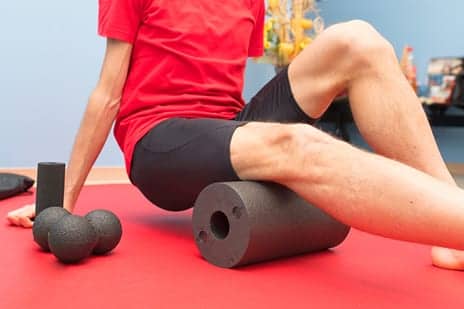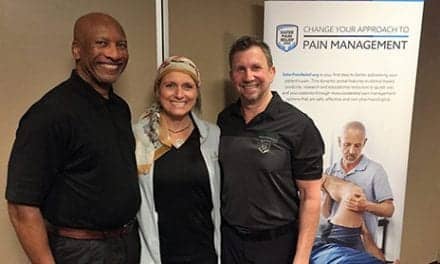If you’re not already using a foam roller in your practice, a physical therapist offers some facts about the versatile piece of exercise equipment that may entice you to try one.
“Foam rollers are under-utilized and under-appreciated,” says Christopher White, physical therapist and manager of outpatient rehabilitation at Ronald Reagan UCLA Medical Center, in a media release.
“This versatile piece of equipment not only can help lengthen muscles before and/or after exercise, it can also relax and soothe aching muscles.”
Foam rollers are designed to break up adhesions that form in muscles or tendons, as well as loosen trigger points (muscle “knots”). Your body weight is what helps the roller target specific muscle areas, he explains.
“The rolling motion loosens, relaxes, and lengthens muscles in much the same way as a kneading massage does,” White says. “Rolling is generally not as intense or targeted as a deep-tissue massage, but that can depend on how much pressure your trigger point is willing to endure.”
“If you already have a roller, you likely have a love/hate relationship with them,” he adds. “The rolling process can be uncomfortable, and the body positions needed to utilize them correctly can be awkward. But you’ll ultimately feel the benefits.”
Here are some basic facts about foam rollers, according to White in the release:
- Choosing a foam roller: Foam rollers come in a variety of lengths, widths, and densities. Choosing the right type of roller can help maximize the effects and reduce discomfort, so it’s important to try a few out before deciding which one to purchase.
- Density: Besides correct utilization of the foam roller, density is a prime factor in how effective a roller is at trigger-point release. Low-density rollers provide less intense pressure, meaning they provide a more comfortable rolling experience but give a tighter stretch. Medium-density rollers provide more pressure because they are less flexible. High-density rollers provide the most pressure, but give muscles the fullest stretch.
- Size: Long rollers (36 inches) are versatile and a good choice for your first foam roller. They provide more stability than shorter rollers, and are more effective when used on larger muscles such as quads or hamstrings. Shorter lengths (12 to 18 inches) work best on calves and other smaller muscles, and are the perfect size for travel.
- Diameter: The majority of foam rollers are 6 inches in diameter, making it easier to comfortably roll your body onto it and then keep the rolling motion under control.
While most rollers are smooth (and best for new users), some come with surface texture which intensify the pressure on targeted areas. New to the market are vibrating foam rollers. The added sensation of the vibration distracts your muscles from the uncomfortable pressure of the roller, which lessens the sensation of pain. This type of roller has also been shown to increase range of movement after only a few uses, the release explains.
“Foam rollers may look like something you see in a swimming pool, but if utilized correctly, they can offer a lot of long-term benefits,” White concludes. “They reduce stress, improve posture, decrease muscle soreness, and generally make you feel more mobile, which are all important components of injury prevention and overall good health.”
[Source(s): University of California, Los Angeles (UCLA), Health Sciences, Newswise]





